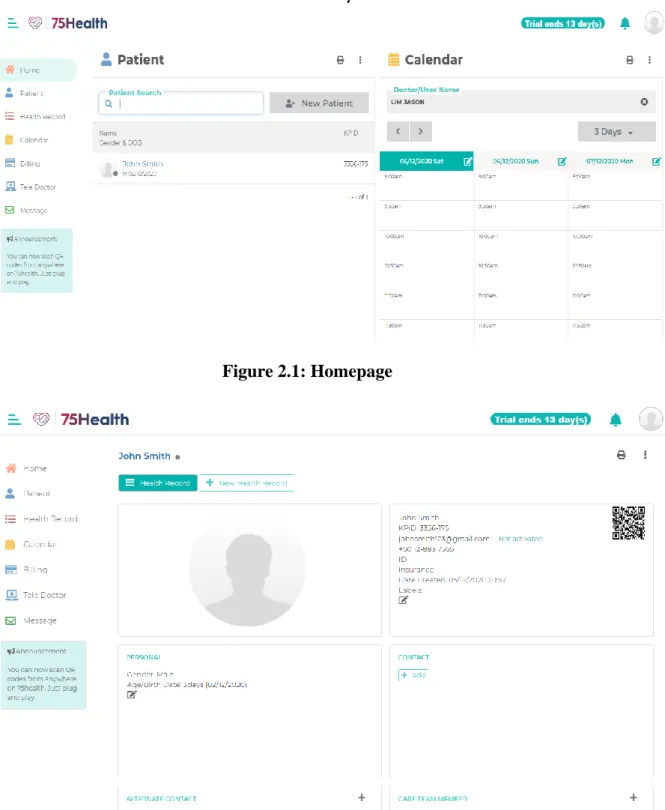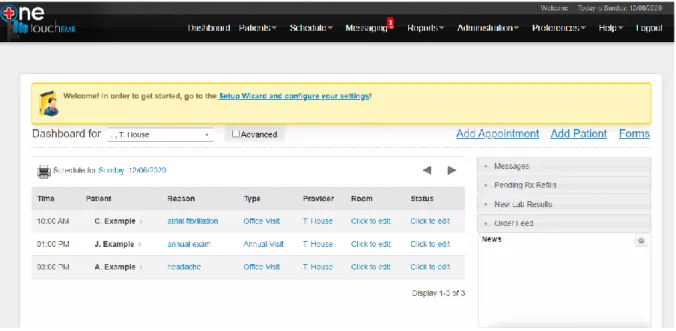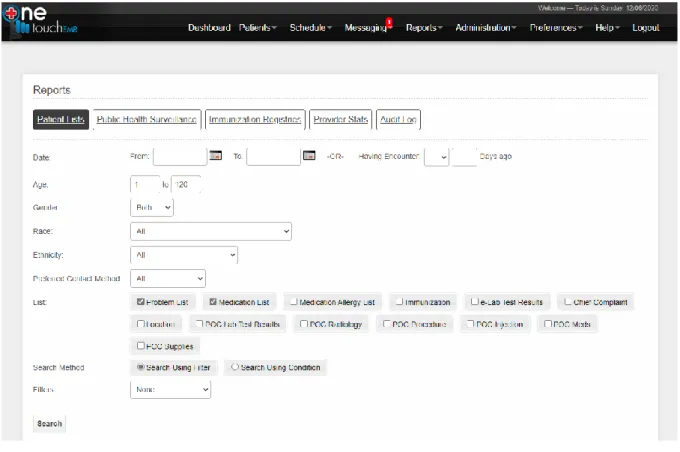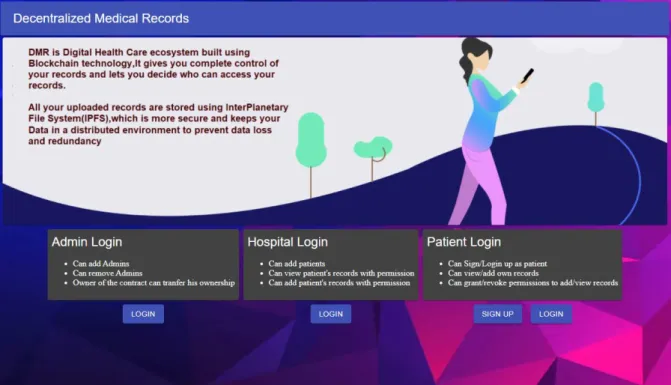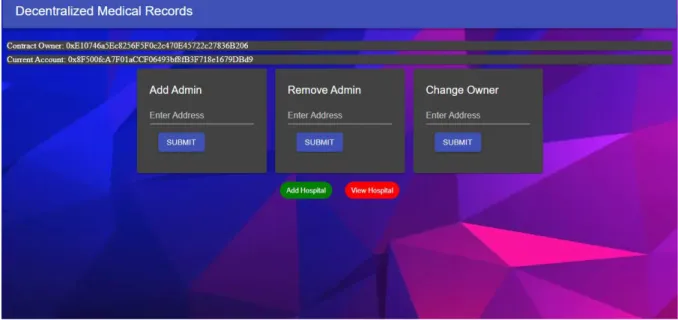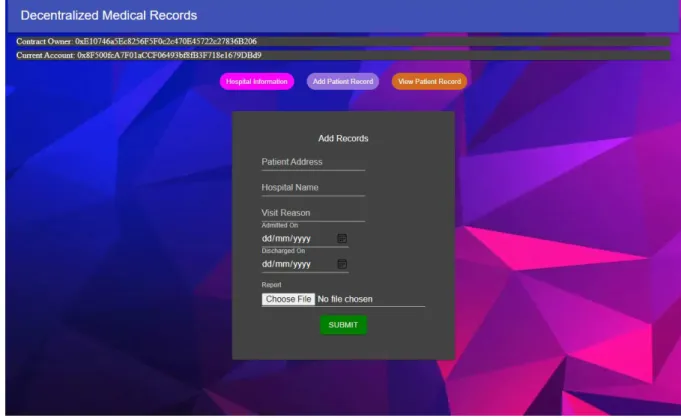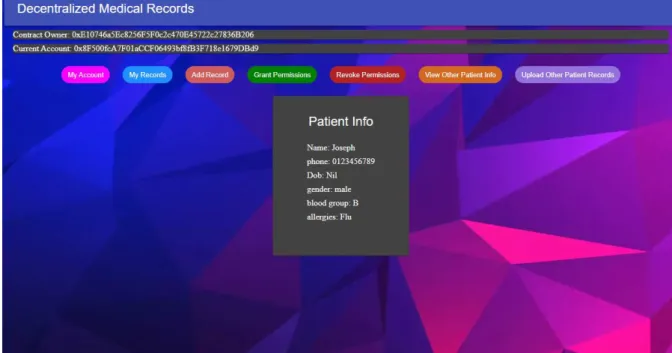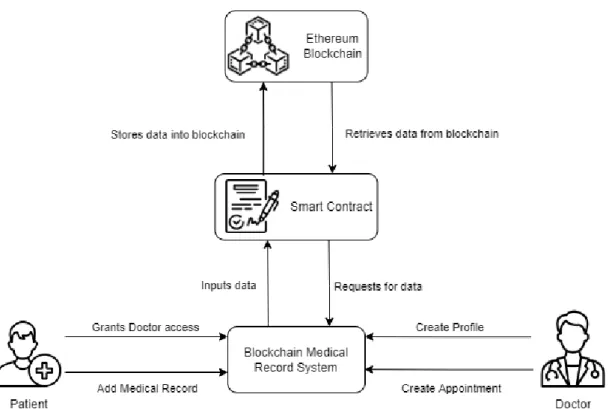Title: Development of Decentralized Application (DApp) Using Blockchain Technology to Improve Healthcare and Medical Record Systems in Malaysia. In this project, blockchain technology and smart contracts will be the proposed method to solve problems with current medical record systems.
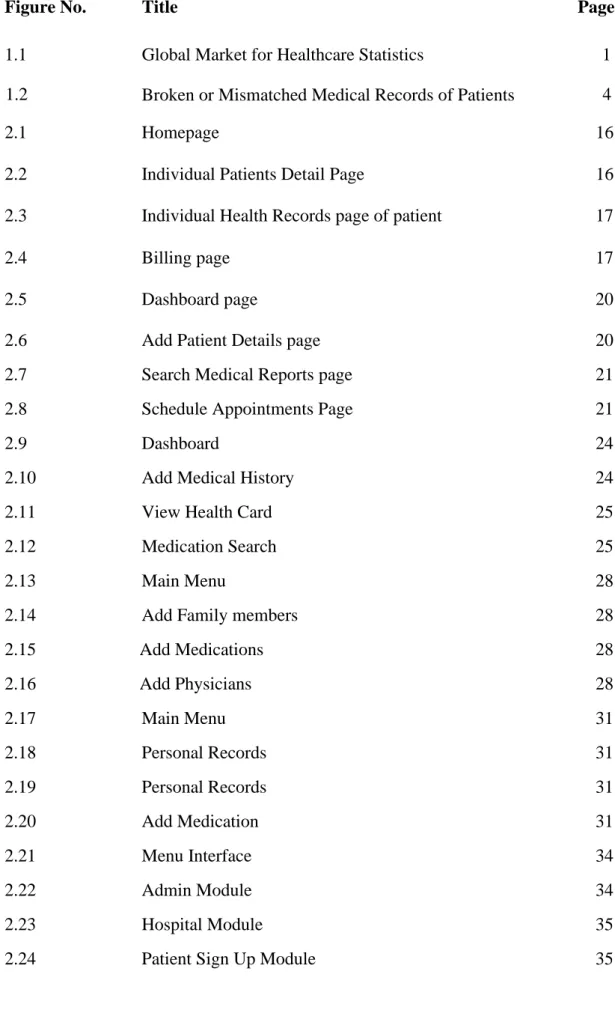
Introduction
- Project Background
- Problem Statement
- Motivation
- Project Scope
- Project Objectives
- Impacts, Significance and Contribution
- Report Organization
The problem domain of the blockchain medical record system is Blockchain technology and hospital patient medical records. This problem can cost the patient his life because his medical records are not brought with him.
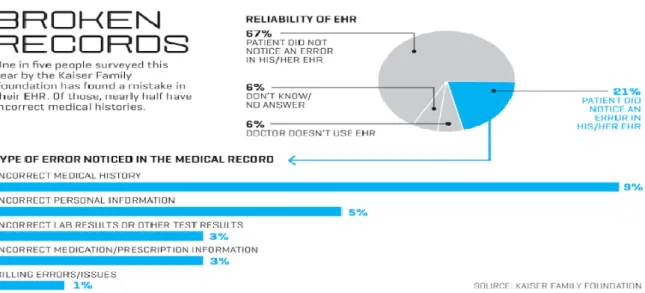
Literature Review
Review of Technologies
Javascript To code the entire front-end and back-end of the blockchain web application. React To establish the interaction between the frontend and the smart contract of the application.
Review of Existing Systems
- OneTouch Web-Based EMR
- My Health Record
- MRT Medical Records Tracker
- Multi-Profile Medical Records
- Decentralized Medical Records
- Comparison Table
Faculty of Information and Communication Technology, UTAR (Campus Kampar) 17 Figure 2.3: Page of the patient's individual health data. As shown in Figure 2.17, users can store and manage all family medical records through the application, which will ensure that all family members.
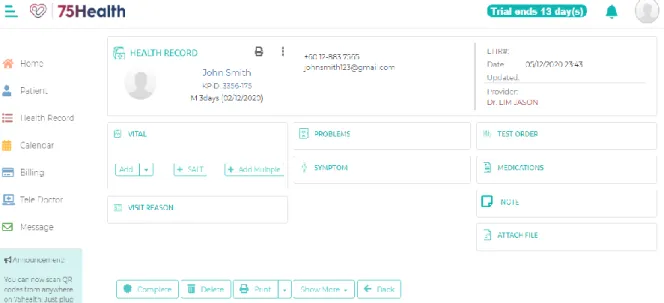
System Methodology
System Design Diagram
- System Architecture Diagram
- Use Case Diagram and Description
- Activity Diagram
Faculty of Information and Communication Technology, UTAR (Kampar Campus) 42 Use case Create new medical record. Faculty of Information and Communication Technology, UTAR (Kampar Campus) 43 Use case Revoke access to view record. Faculty of Information and Communication Technology, UTAR (Kampar Campus) 44 Use case See medical record details.
Faculty of Information and Communication Technology, UTAR (Kampar Campus) 49 Figure 3.5: Activity diagram: create new appointment/update appointment. Faculty of Information and Communication Technology, UTAR (Kampar Campus) 50 Figure 3.6: Activity diagram: View medical file details.
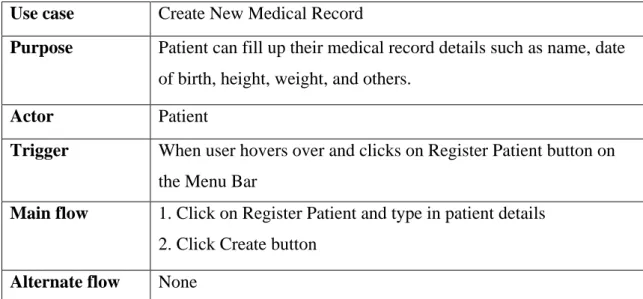
System Design
System Flowchart
Faculty of Information and Communication Technology, UTAR (Kampar Campus) 32 Multi-profile medical records are an innovative and practical application for managing and storing the health data of the whole family. Faculty of Information and Communication Technology, UTAR (Kampar Campus) 37 Decentralized Medical Records is a simple blockchain medical record application with a wide range of functionalities.
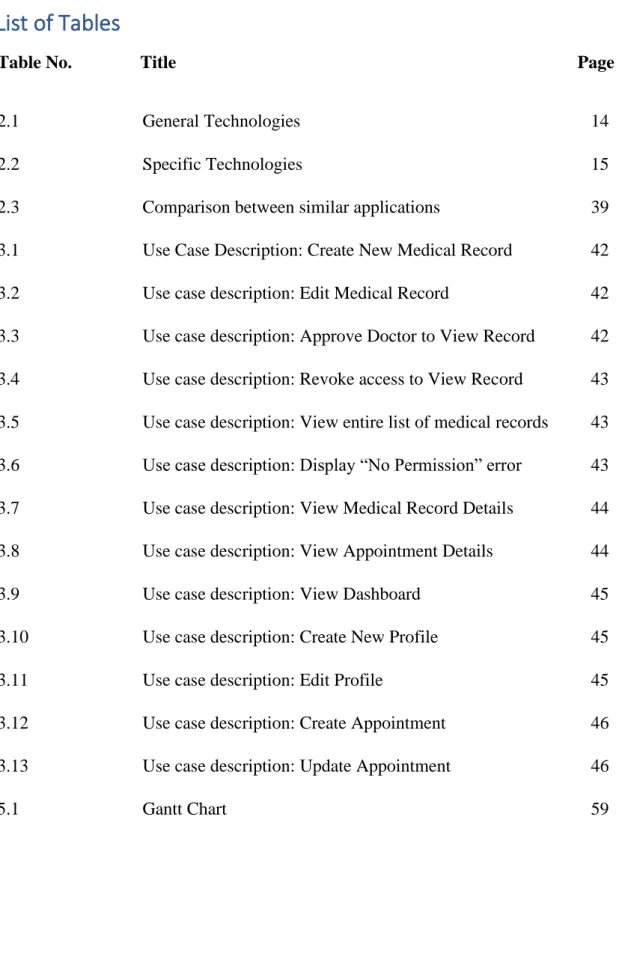
Flowchart Description
- Home Page
- Register Patient
- Register Doctor
- Patient Module
- Doctor Module
- Appointment Module
- Medical Records List Module
- Dashboard Module
In the smart contract, there is some code that I have added that will check if the doctor has already created an account or not. Whenever the patient enters the doctor's address and the clicks are sent, the doctor will automatically be given permission through the smart contract. The doctor will click on the view profile and the smart contract will automatically check if the doctor is already registered.
It lets the doctor fill in their details and the smart contract checks if the doctor has already registered. The first function, which is to create an appointment, requires the doctor to enter the details of the appointment first.
System Implementation
System Methodology
In the second phase, a preliminary design or a rapid design of the system must be produced. The simple design of the system will give an idea to the user and also help the developer to develop the prototype of the system. In this phase, the proposed prototype of the system will be presented to the users for testing.
Finally, when the user is satisfied with the system, the final prototype will be the system published in the market for everyone to use. The system will need to undergo regular maintenance to minimize system errors and correct errors not present in the prototype.
Project Timeline
Settings and Configuration
- Design of Smart Contract (Solidity)
- Install the needed packages and dependencies (Node.js)
- Design of Smart Contract Integration Scripts (web3)
The compiler script takes Solidity code (code written in Remix) and then compiles it into a JSON file. The deployment script takes the JSON interface generated by the compilation script and deploys it to Rinkeby Network using Infura. After running the script, the smart contract will be deployed on the Rinkeby Blockchain, but it will require up to 30 seconds of waiting.
This will create an instance of the smart contract that can then be interacted with by implementing a frontend and backend. The web3 script serves the purpose of enabling users to interact with the smart contracts through the Metamask extension on the web browser.
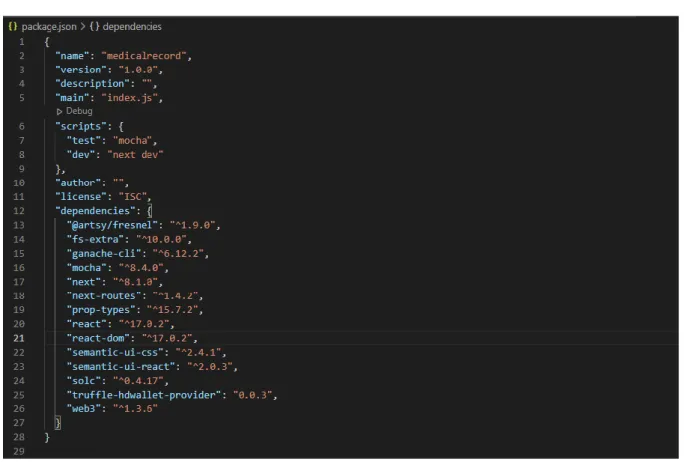
System Operation
- Home Page
- Register Patient Medical Records
- Register Doctor Profile
- Patient – View Profile
- Patient – Edit Profile
- Patient – Allow Access
- Patient – Revoke Access
- Doctor – View Profile
- Doctor – Edit Profile
- Doctor – Make Appointment
- Doctor – Update Appointment
- Records List Page
- Dashboard Page
The View Patient Profile page divides the patient's medical record information into two organized boxes to facilitate viewing details. After agreement, the details of the agreement will be displayed on the patient's record/profile. Faculty of Information and Communication Technology, UTAR (Kampar Campus) 78 Figure 5.22: Growth figures and insightful statistics.
Faculty of Information and Communication Technology, UTAR (Kampar Campus) 79 This visualization indicates the number of patients vs doctors throughout the year. Faculty of Information and Communication Technology, UTAR (Kampar Campus) 80 Figure 5.25: Number of agreements per patient.
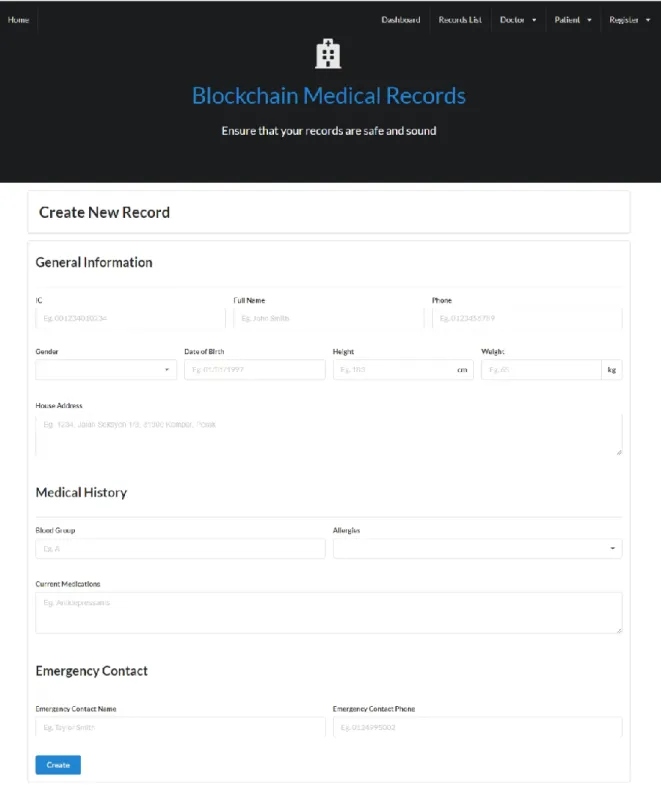
Concluding Remark
Through this interactive pie chart, we can see the distribution of each patient's appointment number. This can be a useful visualization when the hospital c-suite wants to know which patients have made the most appointments and how many appointments this patient has made. Note that it only displays the patient's address in the center of the pie chart, as this is to ensure patient privacy is maintained while providing insightful visualizations for hospital management.
System Evaluation and Discussion
Testing Setup and Result
These are the mocha test results after running the code 'npm run test' which runs the mocha test script. After running the test script, it will execute each test in the test script one by one, starting with "can deploy record contract". If the test fails, it will report an error and continue running the rest of the tests.
At the end of each test case, an equals statement is used to test that the results that are returned will be equal to our expected value. Since we can see that all the tests are passing, then we can safely assume that our code is running on the Ganache Blockchain without any issues.
Project Challenges
Faculty of Information and Communication Technology, UTAR (Kampus Kampus) 83 Another technical problem encountered in the development of blockchain applications is that the documentation is not user-friendly. If that doesn't fix the problem, developers can always visit StackOverflow to find answers. However, given that this technology is still in its early stages, few developers can help answer these questions.
Objectives Evaluation
Faculty of Information and Communication Technology, UTAR (Kampus Kampar) 84 For the second objective, I try to develop a decentralized application that will reduce the risk of privacy violations by allowing users to take full control of their medical data . For example, patients' name and details are not displayed anywhere, including the medical record list and dashboard, only when the patient authorizes access to the doctor, the doctor can view their medical records. Therefore, patients are in full control of their medical data and are free to do as they wish.
This completely eliminates the risk of privacy violations, as hospitals would not own our medical records and do whatever they want with the rights to our records. The ultimate goal is to evaluate the effectiveness of using blockchain technology and smart contracts to improve the security of electronic health records and prevent a central point of failure.
User Evaluation Survey
The user evaluation survey serves the purpose of finding out if the system achieves the goals and objectives I set for this project. When evaluating the response of the survey, it appears that all the users are satisfied with the system in general. Through this user evaluation process, we can conclude that when they try out the system, users are satisfied with the system, which may indicate that a blockchain medical record system would be really possible and should be further researched in the hope of full implementation to the regular consumers in the future.
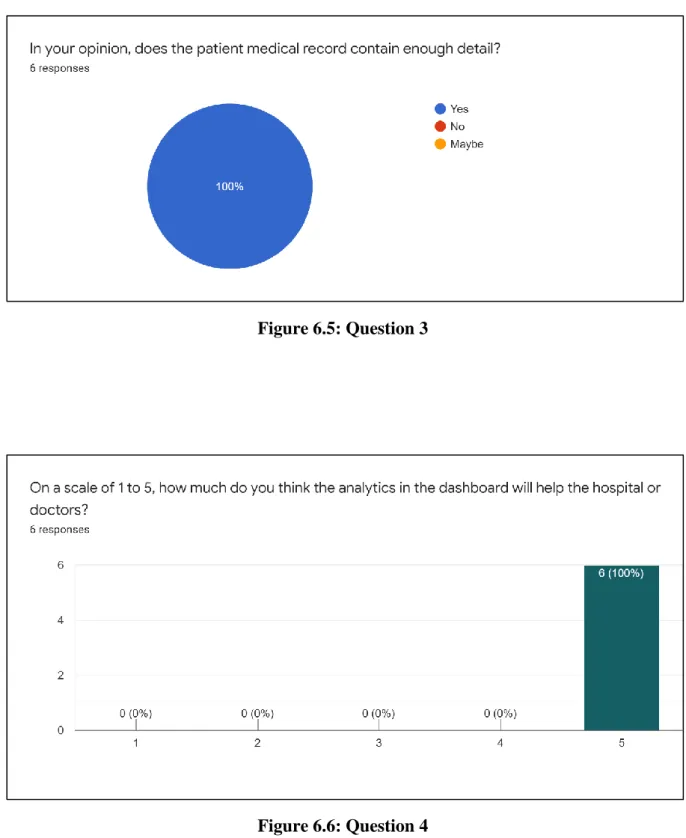
Conclusion
Faculty of Information and Communication Technology, UTAR (Kampar Campus) 90 it is extremely difficult to keep up with the latest trends in creating these applications. The full-stack blockchain application development process is not very well documented, as this technology is incredibly new. Nevertheless, blockchain technologies represent a new way for systems of record to ensure interoperability without compromising security while ensuring that the data is decentralized and cannot be exploited by third parties.
This is an unprecedented change from what current systems of record provide, and blockchain systems of record may become a new norm for systems of record in the future. Finally, the quality of healthcare and the life expectancy of the population can also increase significantly from the mass adoption of blockchain record systems, which will bring all the benefits mentioned in this report.
Recommendation
Available: https://www.devteam.space/blog/how-to-build-an-electronic-medical-record-secured-by-blockchain/. Available: https://www.csoonline.com/article/3191619/faq-what-is-blockchain-and-how-can-it-help-business.html. Available: https://www.thestar.com.my/news/nation health-ministry-investigating-leak-of-patient-records.
Available: https://www.classaction.com/news/data-security-in- healthcare/#:~:text=Your%20protected%20health%20information%20is,a%20hot%20c ommodity%20for%20hackers. Evans, “Blockchain-Based Electronic Health Record System for Healthcare 4.0 Applications,” Journal of Information Security and.
System Requirements Survey
User Evaluation Survey
Progress for the report is good but need to start developing the project in week 3. He ran into quite a few problems with the initial smart contract prototype, but was able to resolve all issues by the end of the week. The UI redesign took longer than expected as a lot of code had to be changed to redesign the entire look of the app.
Implemented 'Dashboard' feature and incorporate several different visualizations - Completely redesign the entire user interface on all pages of the system. Redesigning the entire user interface took more time than expected, as a lot of code had to be changed to redesign the entire appearance of the application.
![Figure 1.1: Global Market for Healthcare Statistics [1]](https://thumb-ap.123doks.com/thumbv2/azpdforg/10232716.0/15.892.178.784.234.562/figure-global-market-healthcare-statistics.webp)
